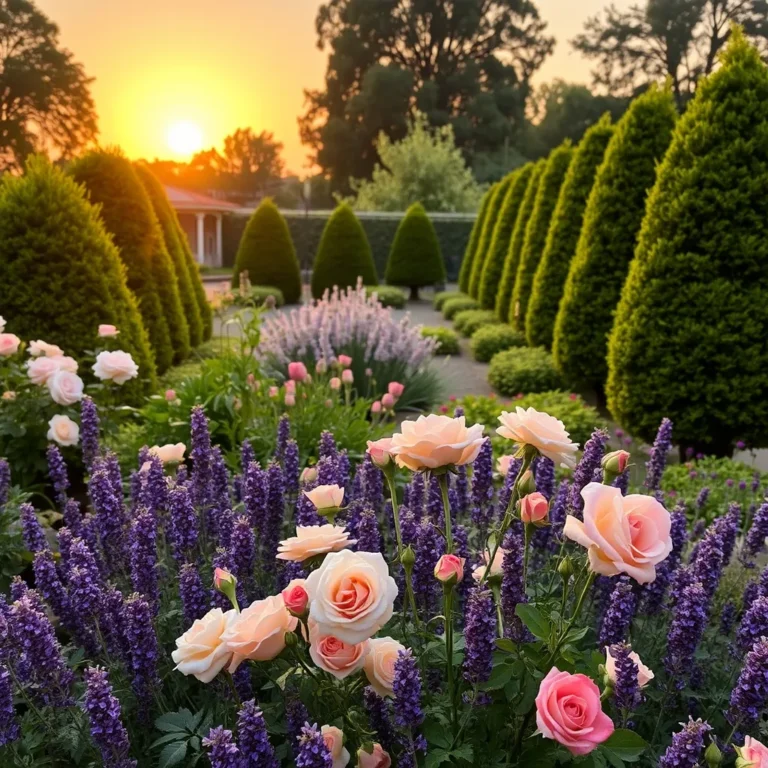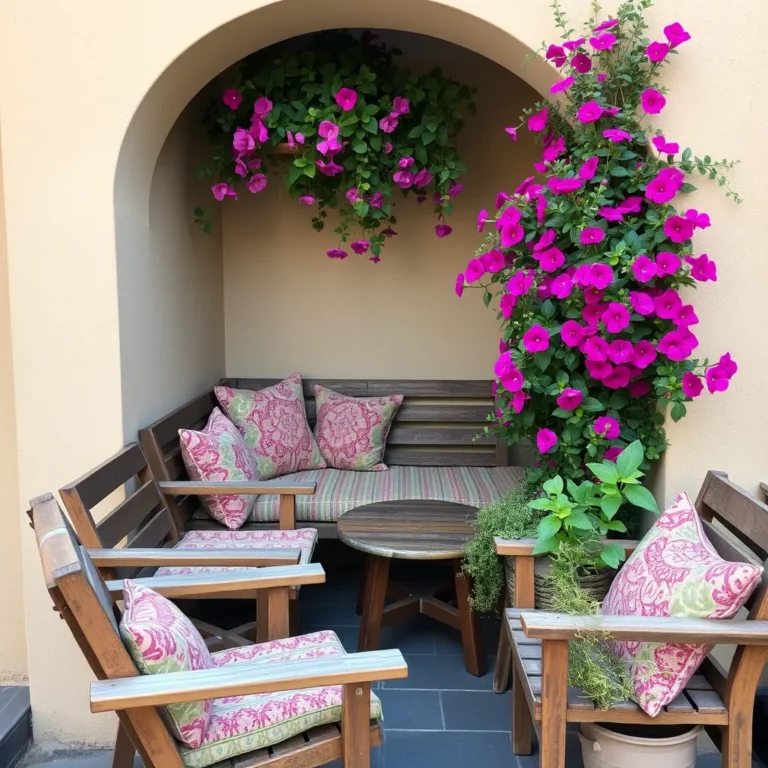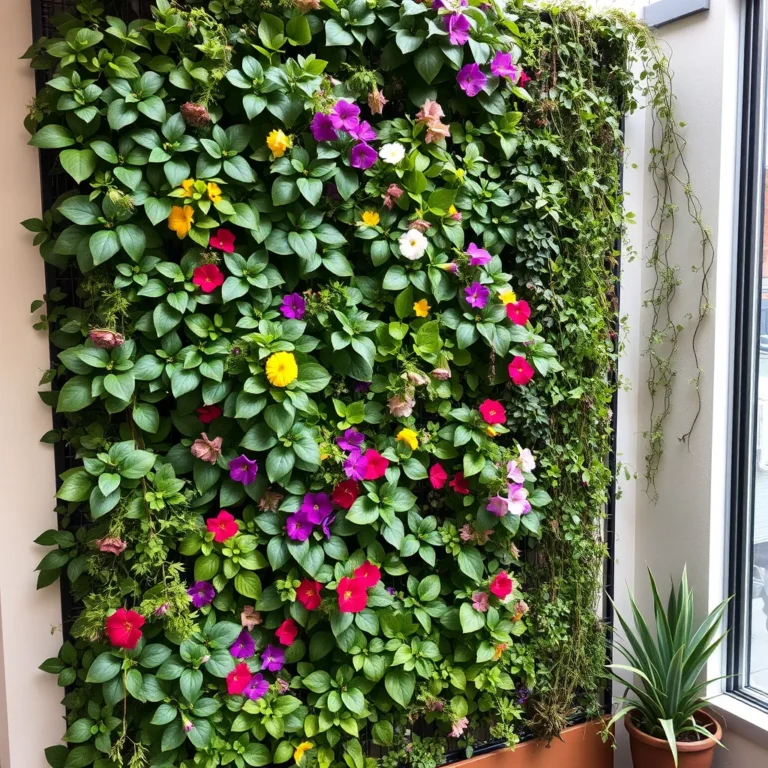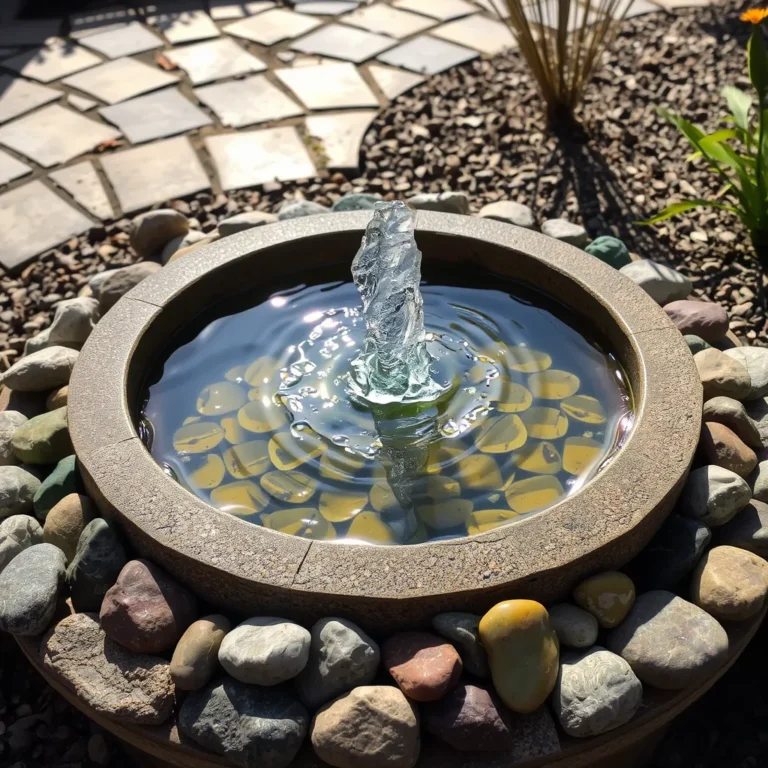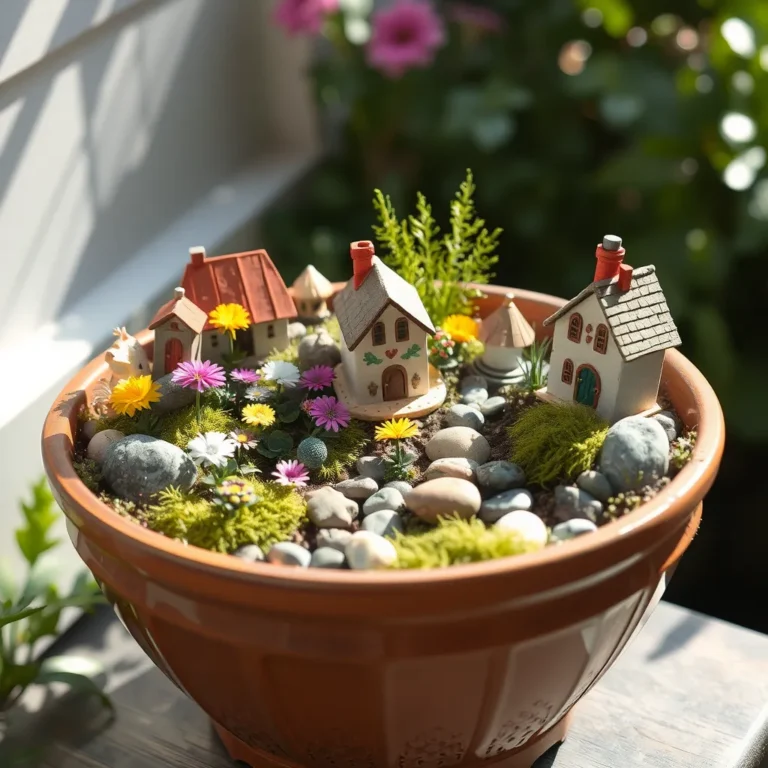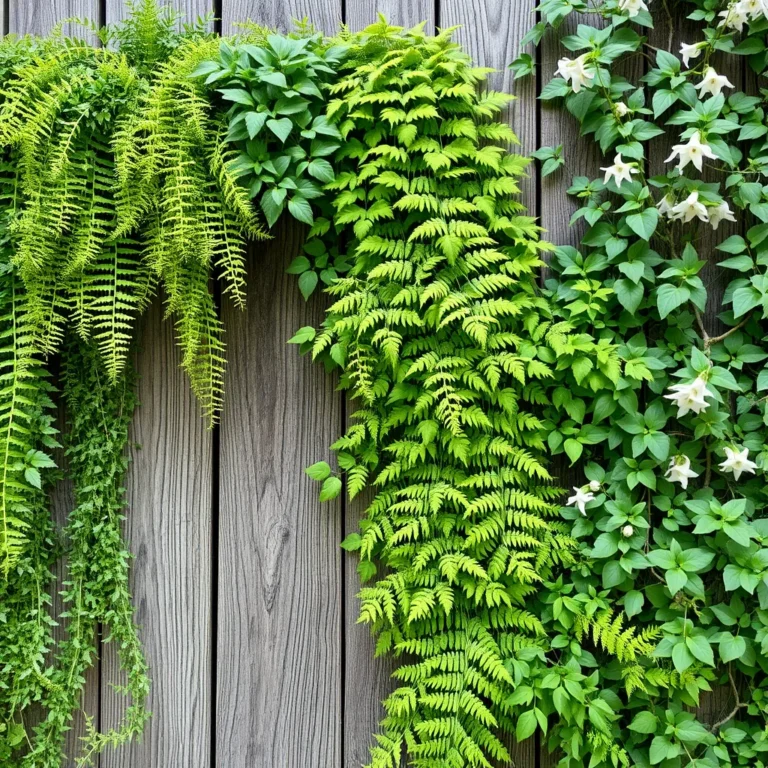9 Stunning Small Backyard Garden Ideas You Can Create
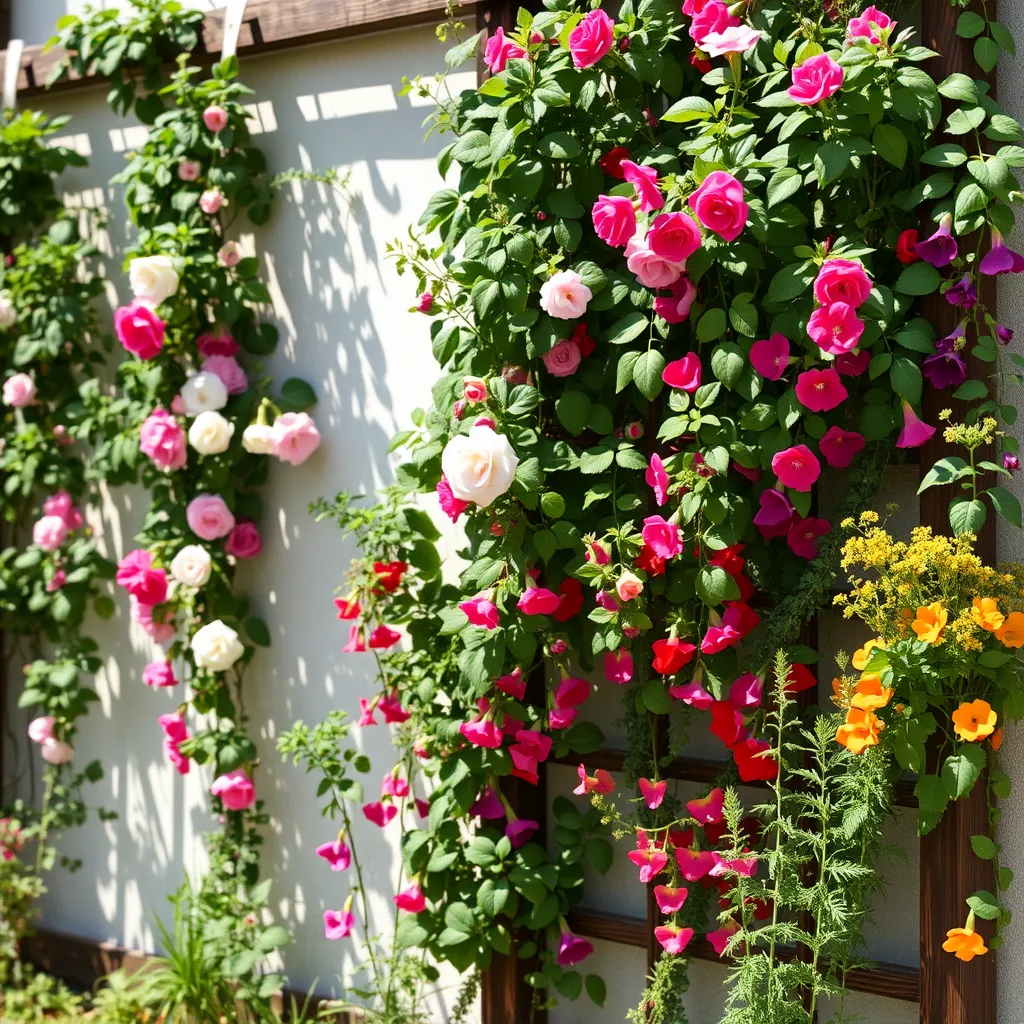
Do you dream of a lush garden but worry about limited space? You’re not alone! I’ve gathered nine stunning ideas for small backyards that you can easily create. From vertical gardens that climb high to magical fairy gardens that spark joy, these projects will transform your outdoor area into a personal paradise. Let’s dive in and explore how to maximize your small space with beauty and creativity!
Vertical Gardens: Maximizing Vertical Space for a Lush Look

Vertical gardening means growing plants up instead of out. This helps save space and adds beauty. You can use walls, fences, or trellises for your plants. A vertical garden can make your small space feel bigger and more alive.
For vertical gardens, some great plants include:
– Climbing roses
– Sweet peas
– Tomatoes
– Herbs like basil and mint
These plants grow well and look nice on a vertical structure.
To create your vertical garden, follow these steps:
1. Choose a location: Pick a sunny spot that has access to water.
2. Get your trellis: Buy or make a trellis. You can use wood or metal.
3. Prepare the soil: Use good soil that drains well. Mix in compost for nutrients.
4. Plant your flowers or veggies: Space them out so they have room to grow.
5. Train your plants: As they grow, guide them up the trellis. Use soft ties to help them cling.
6. Water regularly: Check for moisture daily. Keep the soil damp but not soaked.
With these steps, you can have a stunning vertical garden in no time!
Container Gardening: Stylish Planters for a Pop of Color

Container gardening brings life to small spaces. You can easily move the pots around. This makes it fun to change the look of your garden. Containers also help control soil and drainage. You can use any type of container, from pots to old buckets.
For small spaces, choose containers that are lightweight and easy to handle. Look for pots made from plastic or resin. These materials come in many colors and styles. They can add a pop of color to your garden. You can also use hanging baskets to save ground space.
When it comes to plant selection, think about what you love. Choose herbs like basil and mint. They smell great and are useful in cooking. Flowers like petunias and marigolds add bright colors. Mix tall plants with short ones for a layered look. Arrange them by height to create a natural feel.
Don’t forget to use good soil. It helps your plants grow strong. Water your containers often, as they dry out faster than garden beds. With a little care, your container garden will thrive.
Zen Garden: Creating a Peaceful Retreat in Limited Space

A zen garden helps you relax. It offers a quiet place to think. You can create this space even in a small area.
Key elements to include are rocks, sand, and minimal plants. Use smooth stones to make your garden feel calm. Add fine sand to represent water or waves. Choose a few plants, like succulents or moss, to keep it simple.
To design a small zen garden layout, start with a flat space. Clear any grass or weeds. Then, outline the area with stones or wood. Spread a layer of sand over the ground. Use a rake to create patterns in the sand. Finally, place your chosen plants in small clusters. This layout will give your garden a peaceful vibe.
Fairy Garden: A Magical Touch for Your Small Backyard

A fairy garden is a mini world full of charm. It sparks joy and creativity. You can create a little magic right in your backyard. The appeal lies in its whimsy and detail.
To build a fairy garden, gather a few simple materials:
– Small pots or containers
– Miniature fairy figurines
– Tiny furniture like benches or swings
– Decorative stones or pebbles
– Small plants like succulents or moss
Start by choosing a sunny spot. Fill your container with soil. Arrange the plants in a fun way. Place the fairy figurines and furniture to create scenes. This adds life to your garden.
To maximize small areas, use layers. Place taller plants in the back. Add shorter ones in front. Use rocks or pebbles to create paths. This gives depth and interest.
You can change your fairy garden with the seasons. Add small pumpkins in fall or snowflakes in winter. It becomes a year-round delight!
Herb Spiral: A Functional and Beautiful Garden Design

An herb spiral is a unique garden shape. It allows you to grow many herbs in a small area. The spiral shape helps with drainage and sunlight. Herbs at the top get more sun, while those at the bottom stay moist. This design is perfect for small backyards.
How to Install an Herb Spiral
1. Choose a spot: Find a sunny area in your yard.
2. Gather materials: Use stones or bricks for the spiral walls. You will need soil and mulch too.
3. Build the spiral: Start from the center. Stack stones in a spiral shape. Make it about 3 feet tall.
4. Fill with soil: Add good quality soil as you build. Ensure it is rich in nutrients.
5. Plant herbs: Place herbs in your spiral. Fill the top with sun-loving herbs and the bottom with shade-loving ones.
Recommended Herbs for Your Spiral Garden
– Basil
– Thyme
– Mint
– Oregano
– Parsley
– Chives
These herbs thrive well in a spiral garden. You can easily pick them for cooking. An herb spiral not only looks good but also saves space.
Raised Garden Beds: Efficient Use of Space and Soil

Raised garden beds are great for small backyards. They help you use space wisely. You can control the soil quality better. This gives your plants a strong start.
Benefits of raised garden beds for small backyards
Raised beds offer many perks. They improve drainage, making it easier for roots to grow. You can also keep pests away. The height saves your back from bending. Plus, they warm up quicker in spring.
Sizing and positioning tips for raised beds
Choose the right size for your space. A 4×4 foot bed is easy to reach. Position it in sunlight, but avoid areas with too much shade. Leave space around the beds for walking. This will help you care for your plants easily.
Types of plants suitable for raised bed gardening
You can grow many plants in raised beds. Vegetables like tomatoes and peppers thrive here. Herbs such as basil and parsley also do well. Flowers like marigolds can attract helpful insects. Mix plants to create a colorful and fruitful garden.
Colorful Flower Borders: Framing Your Space with Beauty

Flower borders add joy and beauty to small gardens. They create a frame that draws the eye. This makes your space feel larger and more inviting. Flower borders also attract pollinators, helping the ecosystem.
Advantages of flower borders in small gardens
Flower borders help define areas in your yard. They can create a sense of order. Borders also add color and texture. This makes your garden feel alive. Plus, they can hide any unattractive spots. Flower borders are also easy to maintain.
Plant selection for vibrant flowers in borders
For bright colors, choose flowers like marigolds, petunias, and zinnias. These plants bloom all summer long. They come in many colors, making your border pop. You can also mix in perennials like daylilies and black-eyed Susans. These return each year and provide a consistent look.
Design ideas for arranging flower borders effectively
To arrange your flower border, start with taller plants in the back. Place shorter plants in front for depth. Use odd numbers of plants for a more natural look. Add some ground cover plants to fill gaps. This creates a lush, layered effect. You can also use stones or decorative edging to highlight your border.
Outdoor Seating Area: Integrating Nature with Comfort

A seating area makes your garden feel like home. It invites you to relax and enjoy nature. You can create a cozy space even in a small backyard.
Think about using small chairs and a table. Look for furniture that is stylish yet compact. Folding chairs save space when not in use. A small bistro set works great for tiny areas. You can also use a bench for extra seating without taking up much room.
To make your seating area feel special, add plants around it. Use pots with bright flowers to catch the eye. You can also hang plants nearby to draw your gaze up. Climbing vines on a trellis can add privacy and beauty. Try using herbs like basil or mint in pots for a fresh smell as you sit.
Lastly, consider the shade. If you have sun, a small umbrella or a canopy can help. This keeps the area cool and comfortable. With these ideas, your outdoor seating area will be a lovely spot to unwind.
Garden Pathways: Defining Spaces and Adding Structure

Pathways matter in a small garden. They help create clear areas. You can walk comfortably while enjoying your plants. Pathways also guide visitors through your garden. They make your space look neat and organized.
For stylish pathways, use materials like:
– Gravel
– Pavers
– Bricks
– Stone
– Wood chips
Each material adds its charm. Gravel is easy to lay down and inexpensive. Pavers and bricks offer a classic look, while stone adds a natural touch. Wood chips are soft and cozy underfoot.
Now, let’s explore creative designs for small backyards. You can create a winding path. This draws people in and keeps their interest. A straight path is simple and effective for small spaces. You can also try a mosaic pattern for a unique look.
Use curves to soften hard lines. Add small plants along the edges to blend your path with nature. Also, consider stepping stones for a fun and casual vibe. These ideas will make your small garden feel bigger and more inviting.
Conclusion
Exploring various small garden ideas transforms limited space into a vibrant retreat. Vertical gardens, container gardening, and zen gardens each offer unique styles and benefits. You can design a magical fairy garden or a functional herb spiral to enhance your environment. Raised garden beds provide efficient plant growth, while colorful flower borders frame your space beautifully. Lastly, outdoor seating areas and pathways invite comfort and structure. Embrace your creativity and enjoy the lush beauty that small spaces can hold. Happy gardening!

